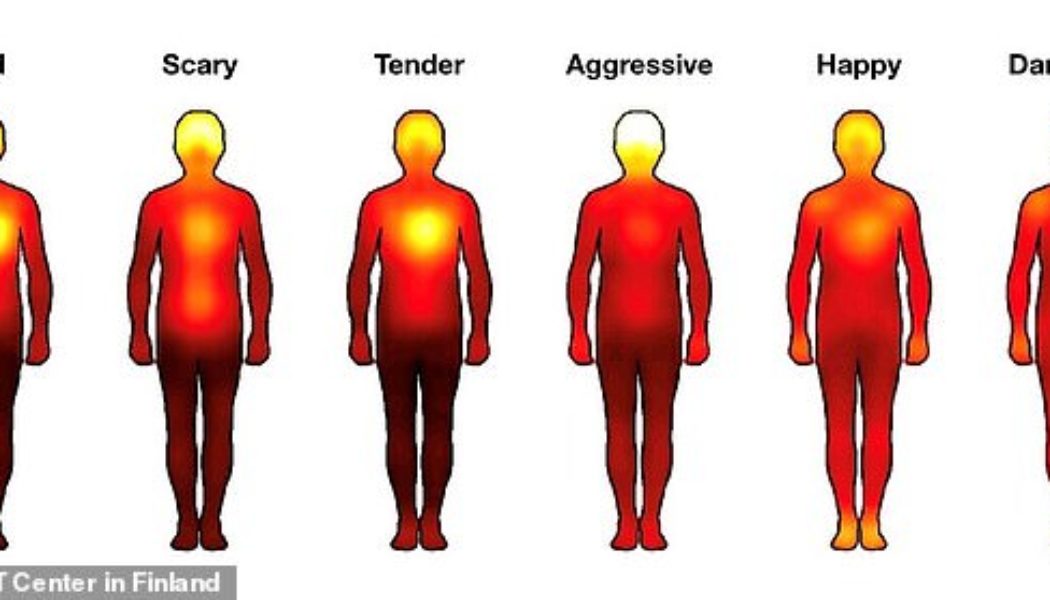Whether it’s a slow love song or an upbeat dance anthem, songs have a unique way of evoking emotions in people.
Now, scientists have revealed exactly where in the body different types of music are felt.
Somewhat unsurprisingly, sad songs evoke a response in the heart and the pit of the stomach.
Meanwhile, aggressive songs really do get us hot-headed, according to researchers from the Turku PET Center in Finland.
‘Music’s influence on the body is universal,’ said Vesa Putkinen, lead author of the study.


Music is often described as the ‘universal language that everyone speaks’, with previous studies showing that when people across cultures hear their favourite song, they can’t resist moving.
However, until now, little research has looked at how music evokes bodily sensations across cultures.
In their new study, the team enlisted 2,000 participants – half of who were from Europe or North American, and half from China.
The participants were shown silhouettes of human bodies, and asked to indicate which bodily region they thought would be activated in response to different styles of music.
The results revealed that the different styles of music caused very different bodily sensations.
Sad or tender songs were felt in the head, chest and pit of the stomach, while scary or aggressive songs were mostly felt in the head.
Meanwhile, both happy and danceable songs were felt in the head and the feet.
The researchers also discovered that the emotions and bodily sensations evoked by music were similar across Western and Asian listeners.

‘Certain acoustic features of music were associated with similar emotions in both Western and Asian listeners,’ said Professor Lauri Nummenmaa, co-author of the study.
‘Music with a clear beat was found happy and danceable while dissonance in music was associated with aggressiveness.
‘Since these sensations are similar across different cultures, music-induced emotions are likely independent of culture and learning and based on inherited biological mechanisms.’
According to the researchers, the findings suggest that music may have emerged as a way to boost social interaction.
‘People move to music in all cultures and synchronized postures, movements and vocalizations are a universal sign for affiliation,’ Dr Putkinen said.
‘Music may have emerged during the evolution of human species to promote social interaction and sense of community by synchronizing the bodies and emotions of the listeners.’









